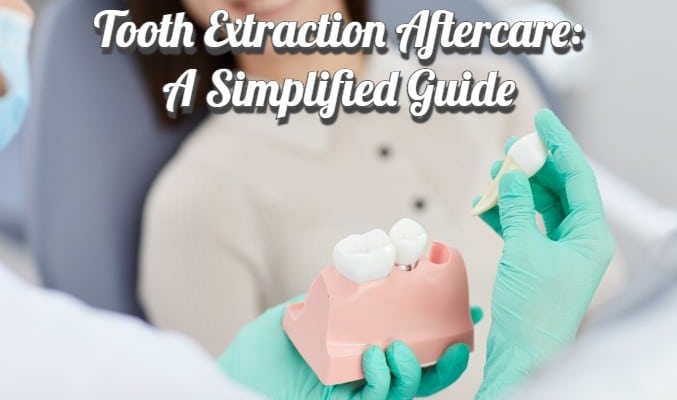It is very common to feel pain and discomfort after tooth extraction. While some discomfort and swelling are normal, it’s important to stay on top of your tooth extraction healing process to ensure you do everything correctly so you heal properly.
Here are a few tips for effective tooth extraction aftercare:
Take rest
The most important thing to remember after having a tooth removed is to rest. You need to give your body time to heal. This means no strenuous activity for at least 48 hours after the extraction, and no drinking or eating anything that might cause irritation in the gums or blood vessels around the extraction site.
The wound needs time to heal after tooth extraction. It can take up to 24 hours for the bleeding and swelling around the extraction site to subside, so it’s important not to rinse your mouth with water or use an irrigator (a device used for flossing) until your dentist tells you it’s okay.
After 48 hours post-extraction, you should start brushing and rinsing your teeth with warm water. Before doing so, you’ll want to make sure there are no debris particles on the tooth that could irritate the area by gently massaging it with a soft toothbrush. If necessary, you can also try using a small amount of hydrogen peroxide on the area around the tooth before brushing.
Eat soft food
After the sedation wears off, your dental surgeon will recommend you eat soft foods and avoid chewing on that side of your mouth. You might be tempted to open a bottle of soda or chow down on a few handfuls of Oreos, but both could lead to an awful taste in your mouth.
The best thing you can do is rinse with water and let the saliva and saliva-borne bacteria work their magic. If you really want some liquid calories, try drinking some milk or apple juice. After 24 hours, you can use a little salt water rinsing to get rid of any bacteria left behind from the anesthesia.
Soft food choices include mashed potatoes, egg salad sandwiches, yogurt, soft scrambled eggs, soups without chunks of vegetables (like cream of broccoli soup), or soft drinks (without ice).
Don’t sneeze or blow your nose
You should avoid blowing your nose or sneezing if at all possible because it can dislodge the clot that’s formed in your sinuses caused by the tooth extraction. If you can’t avoid a sneeze or a cough, keep your mouth open so that you don’t increase pressure on the area around the extraction site.
Use ice packs to manage pain and swelling
Immediately following a tooth extraction, apply an ice pack to the affected area to reduce swelling and pain. When you first encounter pain and/or swelling after a tooth extraction, refrain from applying ice directly to your mouth and instead use an ice bag. Ice is actually very damaging, so if you are not careful and do not follow proper post-extraction protocol, it can lead to tissue damage and even permanent nerve damage.
So, while ice packs are used to reduce swelling and pain after the procedure, if you leave them on too long or too often it can result in tissue damage. Therefore, it’s best not to keep them on for more than 10 minutes at a time and make sure you remove ice packs before they get cold enough to cause damage.
Final words
Just remember that tooth extraction is a very common procedure and you will likely heal just fine. Have professional aftercare and use some of the tips above to ensure your pain and swelling are kept to a minimum. Hopefully, your recovery period won’t last long so that you can be back to your normal routine in no time!
For tooth removal in Vizag, visit Sri Satya Dental Hospital. Consult the best dentist in Vizag and rest assured of the finest dental treatment.

